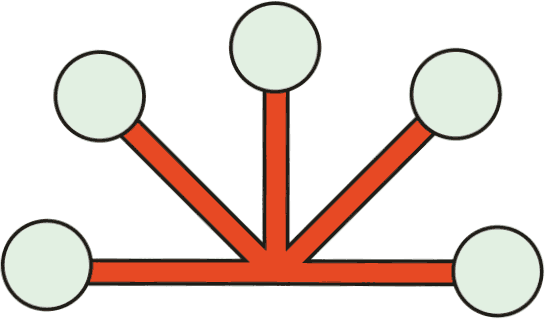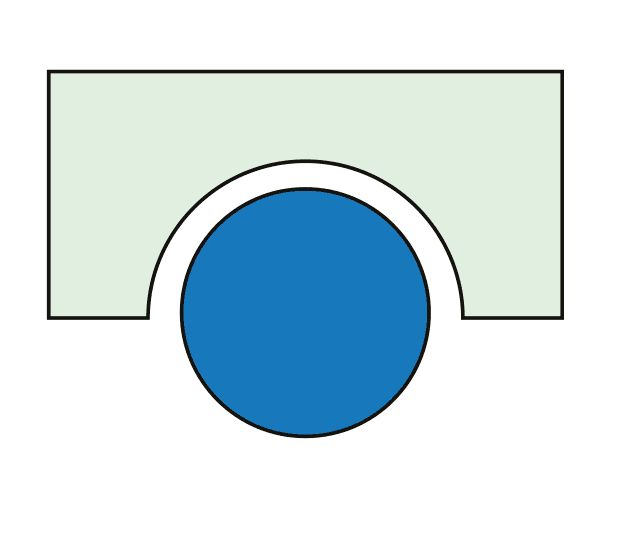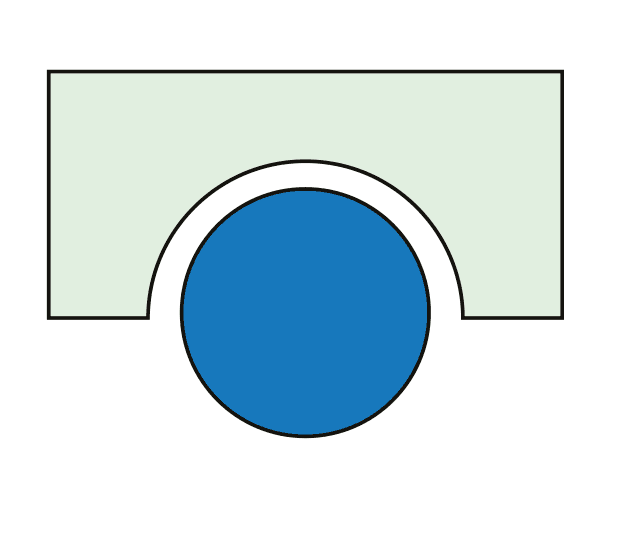The Shipping Great Work Issue
Helping everyone produce high-quality work.
Not sure where to start? This guide can help.
Here’s a list of things that are true of everyone on your team:
- They want to ship great things
- They want to ship them often
- They want to meaningfully contribute to the company’s success
- They want the company to be proud of the work they ship
- They want the company’s support and guidance getting there
Other issues
Not sure where to start? Select one or more tags below to filter the content of this zine:
Looking for:
- Nuts and Bolts
- Wrenches and Hammers
- Factory Favorites
- Recipe Under Development
Kool-Aid Serving Size:
- Kool-Aid Gulp
- Kool-Aid Sip
My role:
- Company Leader
- Crossfunctional Influencer
- Domain Expert / Team Lead
- Operator
Get more details on zine filters here
Filter descriptions
Looking for:
-
Nuts and Bolts
Foundational mechanisms to get started with. Most great organizations rely on their own version of this.
-
Wrenches and Hammers
Supplemental mechanisms to do more with. Many great organizations use these to close gaps or respond to challenges.
-
Factory Favorites
Lesser-utilized tactics that more companies could benefit from trying.
-
Recipe Under Development
Research on best practices and potential impact is still underway.
Kool-Aid Serving Size:
-
Kool-Aid Gulp
The highest-impact, furthest-reaching tactics for everyone to engage with.
-
Kool-Aid Sip
Nice-to-have or opt-in tactics for smaller groups to experiment with.
My role:
-
Company Leader
Someone with direct influence over the direction of the company and what is brought onto the company stage.
-
Crossfunctional Influencer
Someone who makes decisions across multiple teams or functional groups.
-
Domain Expert/Team Lead
Someone with strong command of a specific topic and/or the leader of a functional group.
-
Operator
Anyone getting work done with a command of the company’s values/standards and the inclination uphold them.
OBSERVABILITY MECHANISMS
Observability mechanisms help teams keep a pulse on their own work and share that with stakeholders and onlookers… without having to ask. To gut-check on whether your observability mechanisms are good ones, ask yourself, “if someone visited this dashboard with no context on our work, would they leave with an accurate understanding of how things are going?”
Teams benefit by building better (and shared) literacy for how things are going, generate the perspective that helps them notice trends, and even catch small aberrations before they become big mistakes. Over time, they also create an artifact of the team’s progress over time.
Stakeholders benefit because they have visibility on how the work is progressing… without having to ask. We’ve all had that “CEO is pinging about x, get all hands on deck,” and “Y from team A is checking on x, can you share an update?” moments. These mechanisms get ahead of those interruptions and promote visibility on work by making information reliably available to the rest of the organization proactively.
It’ll also show curious onlookers what their colleagues are up to, and what kind of impact they’re driving, which facilitates meaningful cross-company connections and pride in the collective work.
Regular updates
Keeping stakeholders proactively updated on how work is progressing
- Potential formats include: snippets, changelogs, fake press release for what happened that week
- Send updates available to a single distribution hub at a set cadence that anyone at the company can subscribe to.
HOT TIPS
- At Alan, every employee completes an HPFO’s (Highlight, Progress, Fire, Objectives) every week. It comprises a short description of every team member’s week past and week upcoming and they are posted to a public channel every Tuesday evening. (In performance reviews, team members are asked to reference these as their official record of work)
COMPANY STORY
TEMPLATE
State dashboards
Where others can go to get a snapshot of how work is progressing on key metrics
- Owners of work should agree with their primary stakeholders or work “reviewer/approver” on what metrics are used to evaluate progress.
- Metrics should use the SMART framework for metrics (Specific, Measurable, Achievable, Results-Oriented, Targeted). “Targeted” is often overlooked but it is critical.
- Strive for as much automation as possible; ideally no one has to touch the dashboard in order for them to remain up-to-date.
- Dashboards can exist on all levels of work; company, organization, team, product, cross-functional workstream, etc. All dashboards, but especially the company dashboard, should be made visible to the entire organization.
HOT TIPS
- Consider adding them to the company wiki. Build a depth of understanding on key metrics by Including explanations of the metrics; why this metric, and how it’s calculated.
- When you hit a company target, celebrate together in some special way.
ROLLOUT PLAN
- The Indiehackers team has a Slackbot with daily stats on activity on their forum (cleverly called “Indie Slacker”). Stats include signups, posts, comments, and upvotes with % change from the same day 4 weeks ago.
- At PayPal, a popup box would show the day’s new user count. The team called it called the World Domination Index.
- The earliest version of a company dashboard at Stripe was a daily email called the Alvarado report, named after the company Chief Business Officer and resident “numbers guy”
COMPANY STORY
- Gecko Board is a quick-to-set-up dashboard tool that can pull from many sources.
- Smiirl takes dashboards out of our screens and onto our desks
TOOL TIP
RUDDER MECHANISMS
Even the best-laid plans will require many, many adjustments as the work progresses and the team learns new things. Like adjusting a rudder to steer a boat, the small movements made in the-run-of-work (especially those early in the work’s life) will have a meaningful impact on where the project ends up.
Rudder forums help workstream owners make ongoing decisions that drive towards the outcomes of the plan, often with the support of others around the organization. They’re also a great opportunity to share and discuss learnings from the ground-floor with reviewers and onlookers.
Remember, asking to see work is not an implicit criticism or a breach of trust. It is a signal that you care about your users, your products, and your team. If you run these forums well, they can build trust and maintain a shared view of the state and direction of work across the team. They can also train participants to make better decisions in the future that will help everyone move faster, ship better, and help others do the same.
Leadership meeting
How can we keep all company functions effective and moving in the same direction
- Perhaps the most important decision is who comes. Leadership lines, especially for early teams, can be blurry but this is the time to clarify who is going to be contributing to the company’s most strategic decisions. One helpful criteria may be “those who report directly to the CEO.” If someone will not directly contribute to the conversation regularly, they should not be invited to this meeting.
- Trust is a critical feature of this meeting. Executives must be able to speak openly and freely with each other here. Keeping the group small helps.
- Make sure the meeting is timed appropriately such that there is sufficient time to dig in on what’s often the toughest, gnarliest, stuff the company is facing.
- Define a set cadence and don’t cancel. There will always be things to talk about even if it doesn’t feel like it.
- Definitely don’t not have an agenda. This is an expensive meeting and an agenda will help you not waste time. But, be flexible in the room; it’ll help get the best decisions and ideas out of the group. If the group needs 10 extra minutes to make a decision, it’s important to take it.
- Appoint someone to own the agenda and take notes/follow-ups. This could be the same person every week or rotate around.
- Standing agenda topics might include: leadership hiring, org structure, company planning, HR flags, internal/external happenings that require immediate full leadership attention, company performance, progress on critical metrics, correcting work that is off-course
- The set of things that comes to this meeting will evolve over time so don’t be too prescriptive about what can make the agenda.
- Boredom can kill this meeting. Try to leave administrative stuff to asynchronous review.
- Have fun with it! Executives rarely get to have fun in their meetings and most of the time all eyes are on them. This meeting is among their peers and it should be more relaxed from others.
- From time-to-time, open this up to other leaders at your company. People can be invited for specific parts of the meeting but should not stay for the entire meeting
HOT TIPS
- No leadership meeting should be a secret. You do not need to share comprehensive details of the agenda or discussion, but employees should be made aware that this meeting is happening. They’ll most likely take comfort in knowing it exists!
- But, share updates when you can. Reporting discussion topics at a high altitude can help keep your team feeling in-the-loop without sharing sensitive information.
- There will inevitably be disagreement in the room (this is healthy!) but everyone must leave the room committed to presenting a united front to the company.
- It’s common for leaders to request that team members help prepare for the meeting even though they may not attend. This might come in the form of a metric deep-dive or providing state on a critical workstream for example.
- As the company grows, you may also want to consider another leadership tier that accommodates a slightly broader audience.
ROLLOUT PLAN
- Apple ran an ET (executive team) meeting every Monday where every product area would run then-CEO Steve Jobs through their development plans in meticulous detail and make small decisions together. These meetings were also used as a way to groom potential leaders; lower-level executives would be invited to observe parts of the meeting to get a sense of how Steve and ET worked.
- Jeff Bezos, Amazon CEO, regularly convened his “J-team” on high-priority company strategy and decisions. When the company was spinning up a new initiative, he would often assign a book to the team to read and discuss.
COMPANY STORY
Check-ins on plans
Evaluating progress on plans
- Reviewers/approvers must relentlessly ask about outcomes and impact; it’s so easy to orient this forum on inputs and forget to talk about impact.
- Provide a template for these check-ins so that plan owners know what to expect and everyone can get the most of the time. Remember: rubbish in, rubbish out.
- Consider asking teams to take a broader step-back to take a more holistic view of progress with monthly or quarterly business reviews (it might be useful to align these with key milestones in your planning cycle). Quarterly (or monthly) business reviews are a popular format for these (see templates)
HOT TIPS
- Publish notes from these to the rest of the organization so they can follow along on progress on high priority workstreams.
ROLLOUT PLAN
- Reed Hastings (Netflix) and Daniel Ek (Spotify) have board members sit in on relevant Quarterly Business Reviews
- Stripe experimented with check-in that was exclusively focused on metrics; specifically, how they moved since the previous check-in and why. No docs, no decks, just data. There was a strong bias for functional dashboards over ad-hoc data pulls.
COMPANY STORY
TEMPLATE
Reviewing Users
How our most meaningful user relationships are progressing
- This is a great forcing-function for remaining users-focused. Many rudder forums are designed to measure progress on intrinsically-set projects. This forum forces the company to take the user’s perspective on how things are going.
- This should apply to existing customers *and* prospective customers, and potentially partner relationships.
- Make this distinct from regular reporting on the health of the acquisition funnel (your marketing team can take care of that). This is the forum to go deep on the highest priority potential customers.
- This should help unblock work that impacts the largest users.
HOT TIPS
- Stripe has a process for “Top User Asks” that consolidates requests across all large users and prospective users to help product teams prioritize what to build.
COMPANY STORY
TOOL TIP
Leadership Offsite
Covering the topics the leadership team needs more time and space to think and talk through
- A full-day quarterly is a common cadence. If you are not operating as efficiently as you would like, consider a full day monthly.
- When considering topics, start with the lens of the things everyone in the organization must be aligned on and working towards. This might include: setting plans or the narrative (internal and external), thinking bigger and longer-term, brainstorming ideas for the company and organization, how to unblock or accelerate key workstreams, how the people at the company are doing/feeling.
- Leadership offsites do not always need clear goals. Sometimes it is worth spending time together with the simple of getting to know each other better (which will naturally flow into working together better). This is especially true for rapidly-scaling companies.
- Be very selective with invitations; ideally this is the same group as your Leadership Meeting. Do not invite others unless you really, really need them. You can always invite someone for a portion of the day or discussion.
- Talk about priorities outside of work and working styles.
- Schedule far in advance so that the time is blocked.
- You might want to consider blocking time around your board meetings or company planning.
- Try getting out of the office but don’t waste too much time traveling.
- You don’t *need* to have offsites. There are other ways to get the work done. But keep in mind that if the executive team is not having offsites, the rest of the company will not either. Make sure this is what you want.
- End with a meal or activity that is solely focused on enjoying each other’s company.
HOT TIPS
- Let your teams know that this is happening and give some indication of what you’ll discuss. You don’t have to communicate details but your team will be curious and by sharing some information, you’ll relieve the intrigue that comes with things that feel secretive. It’s also important for teams to know when their leaders are unavailable.
- It’s common for leaders to request that team members help prepare for the offsite even though they may not attend. This might come in the form of a metric deep-dive or providing state on a critical workstream for example.
ROLLOUT PLAN
Reviewing Products
How our most meaningful products are progressing
Stay Tuned!
There’s more I’d like to learn before I make any suggestions. If you have any stories, learnings or best practices you’d like to see included, I hope you’ll leave a comment.

GEAR TURN
Blocked
How we efficiently unblock work that’s stuck
Stay Tuned!
There’s more I’d like to learn before I make any suggestions. If you have any stories, learnings or best practices you’d like to see included, I hope you’ll leave a comment.

GEAR TURN
Debate
How we settle debates on key strategic topics
Stay Tuned!
There’s more I’d like to learn before I make any suggestions. If you have any stories, learnings or best practices you’d like to see included, I hope you’ll leave a comment.

GEAR TURN
STANDARDS MECHANISMS
All the company’s work must uphold the values and standards of the company. Not some of the work; all of the work. Standards forums ensure work upholds these standards before it’s shown to users (reminder: users can be internal or external, and quality for both is equally important even if the standards manifest differently).
It’s critical to be discerning about when in a project’s life it comes to a standards forum; focusing on polish too early can be a huge time-waster for teams. For any standards forum, build clear principles and guidelines for what work must come to the forum, when it should come, who the approver is, and how to present the work to the approver. Team, organization, and company leaders should own the creation of the forums and how to interact with them.
Standards reviews can be as lightweight as a ping to a Slack channel (good for copy reviews, for example) or as heavyweight as a meeting with a rotating agenda of projects about to launch (good for product reviews, for example). They can be opt-in (employees know to raise their hand for a review when a project reaches a certain state) or requested (employees are asked to come to review).
This is a place where it’s very easy to add bottle-necks and over-process your organization. Start with the things that you care the most about getting right; or conversely, you think could be the most harmful if you get wrong.
Go-To-Market Launch Review
How we coordinate to get our best work in front of users, ensuring we have sufficient pride and confidence in the way our product and brand will be interpreted through this launch
- All user-facing teams should be consulted to develop a process for working together to ship work to users.
- Company leaders should establish principles for what aspects of launches they want to stay especially close on. For example, leaders can decide they want to test products themselves before they ship, look over landing pages, approve tweets, etc.
- Agreeing on a tiering system for the scale of a launch will help crossfunctional partners agree on when and how they want to engage with something launch. For example, the CEO may want to review the blog post for a major product, but not a tweet for a small feature that users have been requesting. Account management and support teams may want to be alerted to any changes to the product, while sales teams might want only to be notified when meaningful features or products are shipping.
- A great launch process will also generate artifacts of product benefits that anyone in the organization can refer to. For example, you may want to share launch messaging with the recruiting team so they can speak confidently about the great things your team is shipping when they talk with candidates.
HOT TIPS
TEMPLATE
Product Launch Review
How we ensure that our product has cleared our quality bar before we put it in front of users
Stay Tuned!
There’s more I’d like to learn before I make any suggestions. If you have any stories, learnings or best practices you’d like to see included, I hope you’ll leave a comment.

GEAR TURN
Critique
How workstream owners can reliably get feedback from key stakeholders or expert onlookers
- This can fit any kind of work; product, writing, design, a project plan, and more. Critiques don’t have to be one-size fits all. Consider having different kinds of critiques depending on:
- How many people are likely to see/use the work
- How much of a departure from the core work something is
- Who the approver is (company leader, team leader)
- Critique levers: format (sync/async), contributors (blockers, non-blockers), SLAs (required/nice-to-have), how much time is dedicated
- The benefits of critique extend to:
- Approvers: They get deeper insight into the work at the 1-foot level and ability to connect that work to work going on in other corners of the company (and drive consistency across it). It may feel like it’s not needed now, but it’s a useful muscle to start cultivating for when we’re way, way bigger.
- Recipients: When a leader critiques your work, they map their/the company values onto your work. That’s extremely motivating! It’s particularly helpful to hear, directly, how company leaders think and what their expectations/visions are for your work product. That’s incredibly useful! And, more broadly, when someone tells you to do something better, it elevates ambition. Delivering that better result feels incredibly good. And, it makes you better and hungrier next time.
- Contributors: You trust your voice is heard along the way. Plus, you get to see your colleagues kicking butt on their work which is both incredibly motivating and an amazing source of trust.
- Onlookers: Exposure to the Real Work, as it’s happening; not the packaged version. This builds a much more authentic sense of the work-product and how everyone in the room talks about that work product.
HOT TIPS
- At Reddit, employees organized into topic-focused “guilds” (ex- ML, Kubernetes, Frontend) that met every two weeks. The goal of the meeting was to broadcast learnings/best practices and get early feedback on ideas/projects.
- At Pixar, when a director or producer feels like they need some fresh ideas or feedback, they convene their “brain trust” (a group of other directors/producers and anyone else they think would be valuable) and show the current work-in-progress version of what they’re working on. What follows is a lively two-hour give-and-take discussion. It’s all focused on making the movie better. No ego, no politeness, just ideas.
- Figma has a Slack channel called #brand-review, where anyone who was going to publish something externally posted for visual feedback. This not only ensured the quality bar remained high and the visual brand consistent (which is especially important for a design company), it also educated participants and onlookers about how to meet the quality/consistency bar. Over time, employees got a lot better about designing high-quality, on-brand assets themselves.
COMPANY STORY
This is a post about how Figma does their design critiques. The principles, frameworks, and exercises can be extended to non-design critiques as well. Silent critiques, for example, are an incredible tool for remote teams or those with more introverted team members.
RESOURCE
- A great critique forum can create a fleet of ground-level advocates once the work launches; people who are involved- even only if a little bit- in the development of something are far more likely to advocate for it later.
ROLLOUT PLAN
TEMPLATE
Boost
How we course-correct work that’s off-track or appears to be on its way there
- This should be open to any flavor of work from product development to user relationships to slow progress on a key initiative. Leaders should be able to request projects come to review and teams should be able to sign their work up for review proactively.
- When a team is invited to this forum, be very clear and specific about why. And, allow teams to self-select into it if they need help unblocking or accelerating their work.
HOT TIPS
- If done well, having this forum will reinforce a culture of intellectual honesty. Take care to uphold a supportive tone and bias towards action; the goal is to get work back on-track together, not indict teams for getting things wrong.
- The work that comes here is less time-sensitive than Code Red, which requires that relevant team members drop everything to resolve it.
ROLLOUT PLAN
Code Review
How we ensure code doesn't break, or break anything else, when pushed live
Stay Tuned!
There’s more I’d like to learn before I make any suggestions. If you have any stories, learnings or best practices you’d like to see included, I hope you’ll leave a comment.

GEAR TURN
PEER PERSPECTIVES
Your organization is full of incredible people with a rich diversity of skills, experiences, and perspectives. Peer perspectives mechanisms establish norms to help your people take advantage of that in their work.
These mechanisms also help teams stay focused because inquiries and feedback are consolidated to blocks of time specifically allocated to it.
Project Q&A
A way for teams to open their work up to input and feedback from their peers
- Publish a document with the state of the work and what you’re open to learning or curious to get feedback on. Then, create space for others to come and share feedback and/or ask questions. (This is different than Critique in that it is an open call).
- This will not only help the team get useful input from crossfunctional team members before they break things, it can also help generate excitement across the organization for the work you are doing.
HOT TIPS
Office Hours
A way for teams to make themselves available to their crossfunctional partners to discuss work and answer questions
- This should be a discussion-focused format that goes beyond task requests. (see: The Collaboration Issue for more details on cross-team interfaces for getting work done).
- Establish a set cadence for these. Ad-hoc requests can be pushed to this forum to save time and help teams remain focused.
HOT TIPS
This is a mechanism borrowed from academia, wherein professors make themselves available at designated times for 1:1 time with students outside of class.
COMPANY STORY
Conviction Sessions
How to build more confidence in our ideas
- The goal is to convince yourself with true, observable information of an idea. This can be done by determining the questions you would need answered, and what those answers would have to look like, in order to have full conviction in an idea. (Reminder: conviction can go in the direction of a vote to do something or, equally, a vote not to do something).
- A good place to start is “why might someone think this is a bad idea?” From there, you can determine what information you would need to disprove (or prove) the null case.
- Invite the people who are going to push (really push!) on your idea
- This forum will also help you foresee objections others may have (internally or externally) along the way, and arm you with a way to communicate directly and intelligently about them.
HOT TIPS
- Run this as a structured brainstorm coupled with the target outcome of a specific set of investigations to be done as a follow-up. Schedule the follow-up (on appropriate time horizon) before you leave the room so that everyone knows when the group will reconvene with their answer.
ROLLOUT PLAN
- In 2017, LEGO was facing declining revenues. The team brought in marketing leader Remi Marcelli to help turn things around. Instead of jumping right into net-new ideas, he slowed the team down (all launches were paused for 2 months) to gather conviction about what might help. What resulted was a recommendation to dismantle the highly-localized, demographic-focused campaign approach that had been serving LEGO for almost 30 years and instead run a unified brand campaign focused on creativity and passion more broadly. The campaign was a huge success, and pushed LEGO’s into a period of growth despite the macro slowdown in the toy market at the time.
COMPANY STORY
Listening Groups
Getting people together to collect and share ideas and feedback
Stay Tuned!
There’s more I’d like to learn before I make any suggestions. If you have any stories, learnings or best practices you’d like to see included, I hope you’ll leave a comment.

GEAR TURN
Dogfooding
Testing our own work internally before we roll it out
Stay Tuned!
There’s more I’d like to learn before I make any suggestions. If you have any stories, learnings or best practices you’d like to see included, I hope you’ll leave a comment.

GEAR TURN
TURPENTINE CHECKS
Picasso said, “when art critics get together they talk about Form and Structure and Meaning. When artists get together they talk about where you can buy cheap turpentine.” Great organizations are obsessed with turpentine.
Turpentine is what is really going on at the one-inch altitude. It’s not the generic, cliched, shape of it observed from 10,000 feet. Even the smartest, most thoughtful, best-intentioned people won’t get it right without the ground-level perspective and visceral sense of what is.
Still not crystal clear on why turpentine matters? Pixar’s research trips are a great example. When making Ratatouille, the entire crew visited restaurant kitchens in Paris to get a feel for them. Ed Catmull credited these trips with the “obsessive specificity” of the kitchen scenes; the sound of clogs on the tiles, how chefs held their arms while chopping, and more. It’s why those scenes feel so real when you see them on the silver screen.
Turpentine makes the product and culture better. Getting neck-deep versus ankle-deep into the minds of users and watering holes of the problem space makes the work more rewarding because employees can feel their impact and hone their instincts for what to put into the world.
The entire organization should be posting to and reading from these channels all the time.
User feedback tune-in
What our users are saying about us and to us
- This can be a channel on chat, an email, or a collaborative file where anyone can drop feedback.
- Require a layer of human curation to post. No bots allowed.
- Strive to provide raw feedback over summaries/translations of feedback as much as possible. This will help everyone build better instincts for how your users communicate.
- Include feedback from users or aspiring users.
HOT TIPS
- Separate this from channels where a response is expected.
ROLLOUT PLAN
- Figma has Slack channels called #tweets-about-figma and #blogs-about-figma where anyone at the company can post what people are saying on the internet about the product or company. Nearly everyone at the company actively checks this channel.
- At Stripe, one of the organization’s most prolific User Operations team members would consolidate “user notes”, organized by themes of feedback/requests, and send them out to the company at the end of every week.
COMPANY STORY
Watering hole tune-in
How we learn from and show up in the places that our users spend their time outside of our product/service
- Watering holes can be digital or physical spaces. Consider anything from HackerNews to Game Developers Conference (GDC) a watering hole.
- An alternative framing for this is “research trips,” where team members go explore the in’s and out’s of a user’s experience. When you go, play the role of a journalist more than the role of a company representative. These can require time and money so make sure the tradeoffs for what you learn will be worth it.
- This will almost certainly create a culture of people from all across your company (not just user support teams or executives) participating in public discourse. It’s always good for business when a user posts a feature idea on Twitter and the PM for that product area responds.
- These may also be good places to build your talent brand. Employees saying nice things about each other on Twitter can be a strong signal to candidates.
HOT TIPS
- Tom Preston, GitHub cofounder, used to go to a lot of Ruby meetups. His words “while the talks were generally high quality, my favorite part was always going to the bar afterwards and talking with fellow coders about what got them excited.” As GitHub built their community, they created GitHub Drinkups.
- CEO of Front, Mathilde Collin, learned that many prospective users that were leaking out of their marketing funnel were trucking companies. So, she started going to trucking conferences to learn more about the space, build literacy on the problems trucking organizations were facing, and learn the vocabulary to use in sales conversations.
- When making Ratatouille, the entire crew visited restaurant kitchens in Paris to get a feel for them. Ed Catmull credited these trips with the “obsessive specificity” of the kitchen scenes; the sound of clogs on the tiles, how chefs held their arms while chopping, and more. It’s why those scenes feel so real when you see them on the silver screen.
COMPANY STORY
Everybody does tickets
A way for everyone to maintain a visceral sense of the experiences of and questions from our users, big and small
- If (and only if) there is good documentation on and processes for how to reply to tickets, this can also help reduce the load of the support team.
HOT TIPS
- Consider including this in your new hire spinups (see: new hire spin-ups in the building the team issue) or as an (optional or mandatory) rotation for non-user-facing team members at some set cadence. Either way, it’s helpful to have a structure for ramping people up in batches on the tools and resources required to do tickets.
- If there are high-ticket-volume times (ex- holidays for e-commerce companies, a breakage causing higher-than-normal inbound), asking everyone around the company to pitch in on tickets can become a powerful company moment. Getting in the trenches together and helping each other out always is.
ROLLOUT PLAN
- At Bloomberg, new hires do support tickets for a whole year before going into their roles.
- The Warby Customer Connection program ensures team members from every department (including leaders) take shifts in Warby Parker’s retail locations
COMPANY STORY
Everybody picks a user
How we foster a deeper connection to and consideration for users
- Everyone means everyone, not just user-facing teams. In fact, it’s probably even more impactful for non-user-facing teams to have one.
- When team members are making decisions or preparing changes to the product, big and small, asking them to consider how this might impact “their user,” might meaningfully change how they do something. Considering how a real person would experience something, instead of a generic persona, can be a powerful force.
HOT TIPS
- Encourage everyone to pick a user that aligns with their particular interests, quirks, background, and story. It’ll only enhance the connection ongoing.
- Consider posting everyone’s chosen user in a single hub as a way to connect team members over what flavor of user catches their eye.
- There can, but does not have to be, direct contact between the employee and the user.
- Consider a “user appreciation day” where the company sends handwritten notes or personalized emails (maybe some swag) to “their user.”
ROLLOUT PLAN
- At Stripe, everyone was encouraged to pick out a user (or aspiring user) and follow along with their story and trajectory on Stripe. Many employees picked users from their home countries or operating in an industry that they really cared about.
COMPANY STORY
Actionable dashboards
How we are performing on critical operational metrics that can be actioned now
- Operational metrics are more focused on inputs (ie- the work required to achieve an outcome). For example, support tickets in the queue, or load on a system.
- Visualizing metrics on dashboards make the trends not only understood, but also felt. These are especially helpful when there is something someone at the company can do immediately to alter the trajectory (ex- user ops tickets, risk reviews, critical services).
- This can hook into your ‘On Call’ processes.
HOT TIPS
- Create a visual cue to signal a metric slipping past an acceptable value (ex- turn the dashboard read when the support ticket queue is too high).
- Make these dashboards inescapable to the teams that should rely on them most.
ROLLOUT PLAN




















